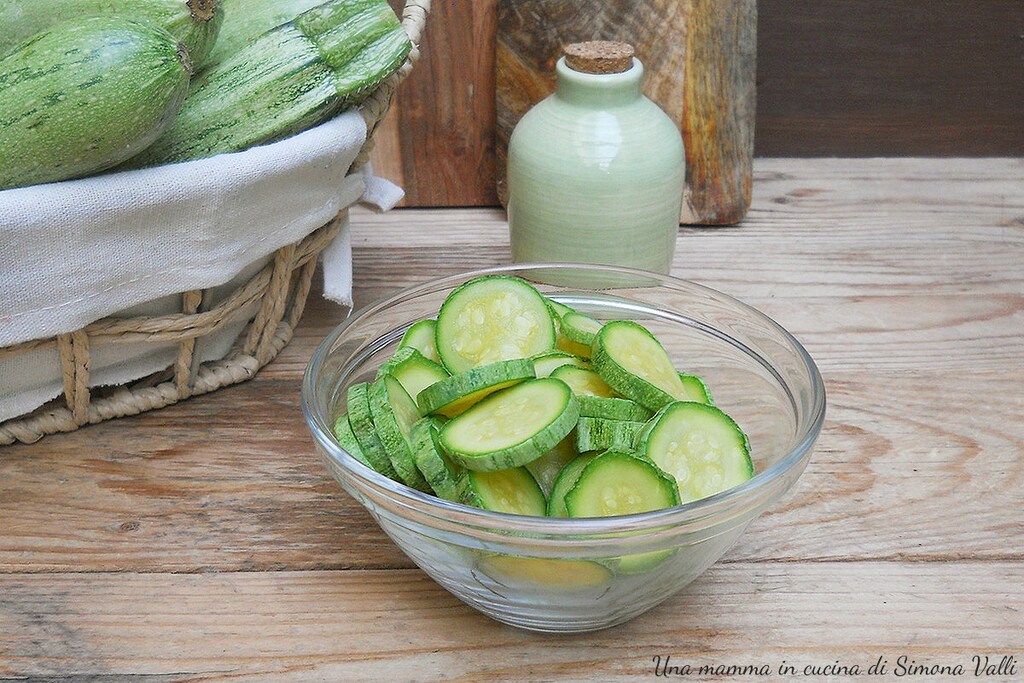How to freeze zucchini for winter, the best method to preserve them
Zucchini are one of the most used summer vegetables in recipes ranging from appetizers to desserts. They are very low in calories because they contain a lot of water but also have a good percentage of fiber, minerals, and vitamins.
Whether raw in salads, grilled, stuffed, blended in a soup, or as the main ingredient in a main course, zucchini lend themselves to endless interpretations. Their delicate taste allows for the creation of simple yet very tasty dishes, here is a short collection of 15 recipes to try “How to Cook Zucchini for Dinner”.
The zucchini is the immature fruit of the Cucurbita pepo plant and belongs to the Cucurbitaceae family. Harvesting takes place from May to September, but depending on the climate, they can also be found in autumn. In supermarkets, they are available year-round, but in winter, you’ll find less flavorful products due to greenhouse cultivation or import from other continents.
How to buy zucchini
Summer zucchinis are decidedly more flavorful and have a longer storage time compared to winter varieties. When buying, avoid non-firm fruits with dark spots or cuts.
How to store zucchini
Zucchini can be kept in the refrigerator, preferably in a paper bag, for 6/7 days, but I recommend consuming them quickly as they spoil very fast.
How to freeze zucchini
If you grow them or buy them from farmers and have plenty, you can freeze them for consumption in winter. It might seem like one of those common articles you find online, but today I’ll explain the best method to preserve them, learned from the book “The Science of Vegetables” by Dario Bressanini: blanching.
I’ve read many articles in recent days, and I must say that everyone preserves them in their own way, some freeze them raw, some cook them, some season them with oil and herbs and freeze them after cooking, and so on. These methods are not entirely wrong, but they do not allow for optimal preservation.
Before we get to the procedure, here are some recipes to try:

- Difficulty: Very Easy
- Cost: Cheap
- Rest time: 10 Minutes
- Preparation time: 15 Minutes
- Portions: for 2.2 lbs of zucchini
- Cooking methods: Boiling
- Cuisine: Italian
- Seasonality: Summer, Autumn
- Energy 21.00 (Kcal)
- Carbohydrates 3.11 (g) of which sugars 0.00 (g)
- Proteins 2.71 (g)
- Fat 0.40 (g) of which saturated 0.08 (g)of which unsaturated 0.20 (g)
- Fibers 1.10 (g)
- Sodium 15.00 (mg)
Indicative values for a portion of 100 g processed in an automated way starting from the nutritional information available on the CREA* and FoodData Central** databases. It is not food and / or nutritional advice.
* CREATES Food and Nutrition Research Center: https://www.crea.gov.it/alimenti-e-nutrizione https://www.alimentinutrizione.it ** U.S. Department of Agriculture, Agricultural Research Service. FoodData Central, 2019. https://fdc.nal.usda.gov
Ingredients
- 2.2 lbs zucchini
- as needed water
- as needed ice
Tools
- 1 Pot
- 1 Bowl
- 1 Tray
- Paper Towels
- 1 Slotted Spoon
Procedure
As I mentioned in the preface of my article, the best method to preserve zucchini is blanching, which involves a brief cooking in boiling water followed by cooling in ice water.
Blanching allows you to almost completely block the oxidative enzymes in zucchini that could spoil them even in the freezer, which is why I previously wrote that other methods of preserving zucchini in the freezer are not correct.
This method will allow you to maintain the color and flavor unchanged even though there will be a slight loss of texture, but this is absolutely unavoidable if you want to freeze vegetables like zucchini that contain a lot of water.
To explain the correct procedure, I relied on the knowledge acquired from the book “The Science of Vegetables” by Dario Bressanini.
Wash the zucchini well under running water to remove any soil residues and trim both ends. Cut them into 1/5-inch thick slices (it’s important that the slices are uniform in size to achieve even cooking and not too large for faster freezing).
Fill a pot with water and bring it to a boil, cook the zucchini for 3 minutes. If you have a lot, like in this case, don’t blanch them all at once; otherwise, the water temperature will drop significantly and take too long to return to a boil. Blanch them a little at a time.
Drain the zucchini with a slotted spoon and immerse them in ice water to stop the cooking.
Spread them out on a tray covered with kitchen paper and dry them well by gently patting them, then place them on a tray in a single layer and put them in the freezer.
Once frozen, transfer them to freezer bags, trying to remove as much air as possible.
The best way to cook frozen zucchini is to use them without thawing; otherwise, they will lose more texture and become soft.
If you need to cook, for example, zucchini in a pan, sauté garlic in olive oil, add the frozen zucchini, and cook them as you would with the classic method.
Notes
For tips on making the recipes, contact me on FACEBOOK and if you like, follow me on INSTAGRAM.
Send me your photos, I’ll happily share them on my social media.

